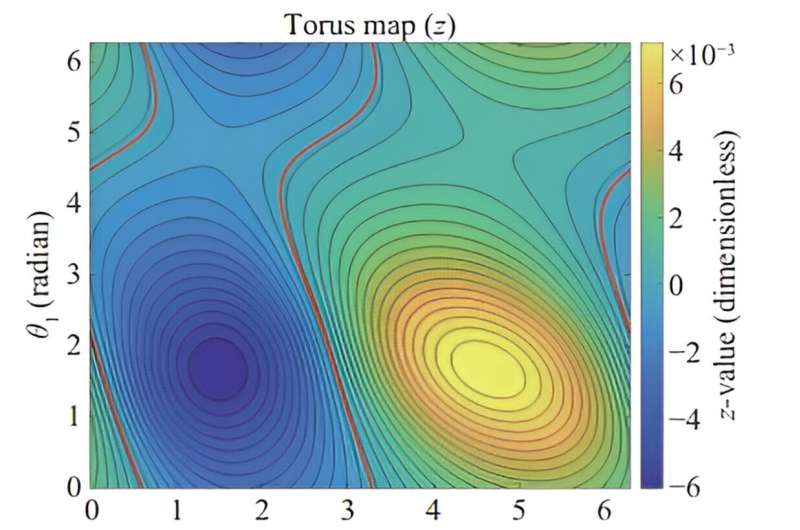One way of doing this is to find 'heteroclinic connections'—the paths that allow spacecraft to transfer from one orbit to another without using fuel.
The mathematics for finding these paths is complex—usually calculated by using vast computing power to churn through one option after another or by making an 'intelligent guess' and then investigating it further.
This new technique uses an area of math called knot theory to quickly generate rough trajectories—which can then be refined. By doing so, space agencies can gain a full list of all possible routes from a designated orbit. They can then choose the one that best suits their mission—much as you might choose a route by studying the tube map.
The technique was tested successfully on various planetary systems—including the moon, and the Galilean moons of Jupiter. Both of these are the focus of current and future missions.
Dr. Nicola Baresi, Lecturer in Orbital Mechanics at the University of Surrey, said, "Spurred on by NASA's Artemis program, the new moon race is inspiring mission designers around the world to research fuel-efficient routes that can better and more efficiently explore the vicinity of the moon.
"Not only does our technique make that cumbersome task more straightforward, but it can also be applied to other planetary systems, such as the icy moons of Saturn and Jupiter."
More information: Danny Owen et al, Applications of knot theory to the detection of heteroclinic connections between quasi-periodic orbits, Astrodynamics (2024). DOI: 10.1007/s42064-024-0201-0
Provided by University of Surrey



